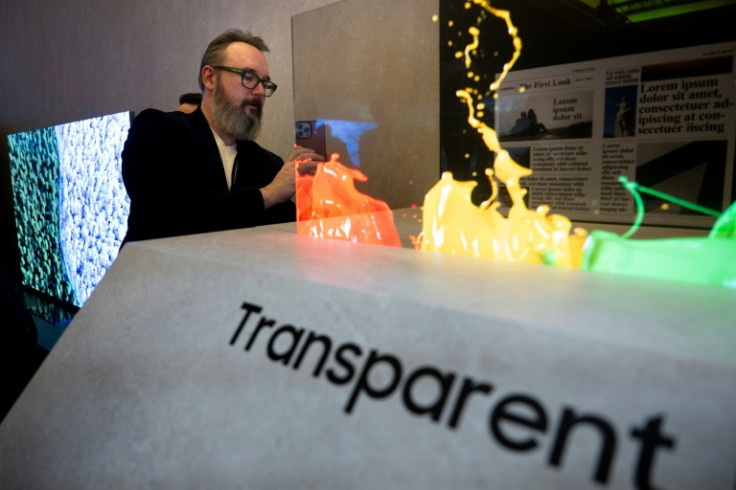
After years spent dominating living rooms, big flat-screen televisions could start getting out of the way of the decor.
That is if new see-through TV models showed off by South Korean consumer electronics giants LG and Samsung catch on.
"How about a screen that gives you back your space?" an LG executive asked on stage Monday while introducing a transparent Signature OLED T planned for release later this year.
The company says the TV is "practically invisible when turned off" and blends into the environment, doing away with the ugly big black screen that can ruin a room's feng shui.
Shaped like a glass box, one can see through the screen to what is behind it, but then switch to a high-definition television for viewing.
Or you can enjoy a digital fish tank, burning fire or any digital image that will blend-in well with your interior design.
Transparent TV technology is not new, but companies have been at pains to convince customers, especially with high sticker prices.
Samsung showed off a TV screen prototype of its own that looks clear as a window but is embedded with micro-sized LEDs for high-definition imagery that come to life when turned on.
"Transparent LEDs are poised to redefine viewing experiences, making the line between content and reality virtually indistinguishable," Samsung said in a release.
Big-screen TVs have long been stars at the annual CES event, and this year is no different.
Chinese consumer electronics powerhouse TCL unveiled an array of models including a "mega-size" TV that measures 115 inches (292 centimeters) diagonally.
Every major TV maker at CES played up artificial intelligence capabilities made possible by chips built into screens, riding an AI theme that dominated the show this year.
TV makers touted AI uses to enhance imagery like instantly converting an classic movie or old home film into rich viewing formats, or to recommend shows.
AI was also being used to enhance video game play capabilities, as TVs cater to gamers wanting massive, immersive experiences.
Hisense's latest line-up of TVs boasted some with AI that recognizes what is on screen and adjusts dynamically to heighten clarity and immersion for viewers.
AI built into Samsung TVs is also designed as a control point for the array of smart devices in people's homes, according to Yong.
"We will watch as TVs become the command center for the home beyond just streaming entertainment," said Jessica Boothe, a research director at the Consumer Technology Association, which organizes CES.
Televisions will evolve into a hub for controlling connecting appliances, security cameras, and more in "smart" homes, even incorporating thermal scanning for health insights, she added.
LG chief executive William Cho said the world is at "a historical turning point" due to AI.
His company aims to be part of that transformation, tapping into data gathered by sensors in hundreds of millions of smart devices in use around the world to detect patterns of behavior and provide insights, Cho said.
"TVs still take up a lot of square footage on the show floor," Techsponential analyst Avi Greengart told AFP.
"There is some nice competition there. Sure, it costs as much as your house, but it is really cool."







